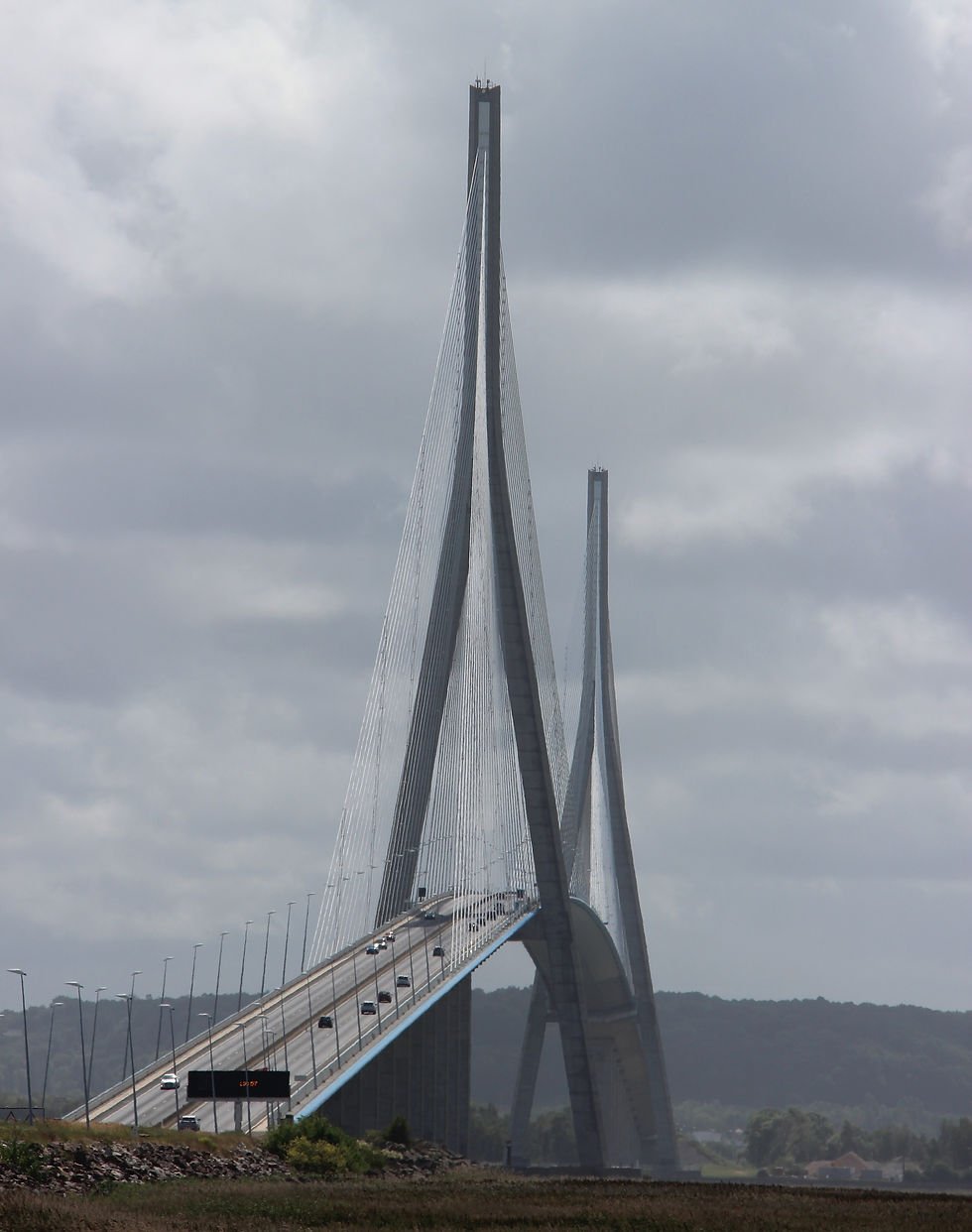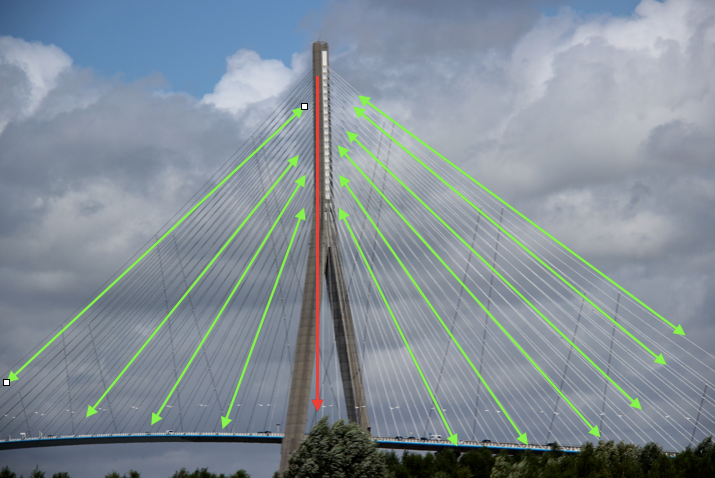The Normandy Bridge
- maia_ramambason
- Sep 1, 2019
- 4 min read

Context:
The Normandy bridge is a cable-stayed bridge crossing then Seine near its estuary in the Havre, built from 1988 - 1995 when it was opened by then French Prime Minister, Édouard Balladur. Having been inspired by the way in which the Tancarville bridge - operating from 1959 across the Seine river near the Havre - increased accessibility to lower Normandy and Paris, the Council of Commerce and Industry (CCI) in the Havre were keen to create a route linking the Havre to Western France more easily. The CCI, began rallying support for the cause in 1975 and by 1987 had gained the support of the Haute Normandie, Seine Maritime and Calvados et Eure regions.
At the time of its construction, the Normandy bridge was the longest cable-stayed bridge in the world, demonstrating the technical prowess of French civil engineering, surpassing the previous holder of this record, the Alex Fraser bridge in Canada by 400m. This length was inspired by the desire to cross the Seine river in one arc, both allowing for the passing of ships underneath, and creating a more elegant profile.
Structure:
The Normandy bridge is a cable-stayed bridge. This means that, unlike in a suspension bridge, the cables which are anchored to the deck, are anchored to the pylons at intervals along the deck’s and pylons’ lengths, and do not simply pass over the pylons to the abutments. The cables in a cable-stayed bridge carry the load from the deck and are in tension. They transfer this load to the pylons and subsequently the foundations, which both experience a compressive force.

The longitudinal arrangement - the arrangement of the cables - can be done differently in different cable-stayed bridges. In the Normandy bridge the cables are arranged using the Fan system, meaning they are attached at regular intervals along the pylon, and regular intervals on along the deck, however these intervals are not the same, so the gradient of adjacent cables is not the same. The cables are not attached along the centre line of the deck, but to both sides.
The bridge is 2145m in length, with a crossing span of 865m, 24m in width and with two pylons each of 204m in height. The deck in both the access viaducts and the main deck is a trapezoidal box girder, however in both the north and south bank viaducts the deck is made using prestressed concrete, as oppose to steel for the main span. The north bank viaduct has a length of 650m and an incline of 6%, while the south bank viaduct, also has an incline of 6% but a length of 460m. Both the concrete viaducts and the main span, were made using voussoirs, that were assembled on site. 32 steel voussoirs were used for the span in-between the pylons, each with an average length of 19.7m.

The pylons, at 204m high have almost the same height as the Montparnasse tower, and were built using 20,000 tonnes of reinforced concrete. The cables, an essential part of the design, are attached to these pylons. There are 184 cables - 8 sets of 23 - each composed of up to 53 smaller cables, with lengths ranging from 95m to 430m. The foundations of the bridge are enormous with 28 wells dug beneath each pylon of up to 54m in depth and each of 2m in diameter.
Structural behaviour:
The benefits of the cable-stayed bridge design lie in the large load that the cables can carry, with a limited risk of buckling, whilst themselves being relatively light in comparison, which enables the construction of longer spans. This is especially the case if the central span is constructed of materials lighter in weight such as steel as it is in the Normandy bridge.

In addition to this, one of the key structural elements in a cable-stayed bridge are the cables themselves, more specifically their arrangement. In the Normandy Bridge, the longitudinal cable arrangement is a Fan system, which means that the axial force in the girder is smaller in comparison to that of the Radial or Harp systems of longitudinal arrangement. Another quality essential to the cables and anchoring systems is their vibration dampening qualities. In a region such as the estuary of the Seine, where the combination of the large open planes of deposited river sediment, combined with the proximity to the Atlantic causes gusts of up to 180km/h, vibration can pose a large risk to the integrity of a bridge’s components, therefore multiple measures have been put in place to reduce the risk of the cable-stays vibrating. All the cables are made air and watertight with an aerodynamic sheath. As well as preventing the corroding of the cables, this reduces the ability the wind has to make the cables move. Equally there are “needles,” which are small steel cables passing between the large sets of cables, to reduce the vibration caused by the wind and passing vehicles, and there are suspensions put in place where each cable meets the deck, again to reduce vibrations.
Apart from minding the effects of vibration on the bridge, the bridge was also designed to be easily maintained. This ease of maintenance is most shown through the way in which each cable can be removed individually from its anchorage point within the steel core of each pylon, without blocking the circulation of vehicles.
Construction:
The construction of the Normandy bridge took place from 1988 to 1995. The foundations were lain first. The pylon foundations were enormous as they were to support 32,000 tonnes of dead load. The 28 wells under each pylon - 14 under each separation of the pylon leg, and 56 in total - were drilled. Cylindrical frames of steel reinforcement were then placed throughout the length of the well, and concrete was poured into each well, each capable of carrying 3,000 tonnes of load.

One of the most innovative elements of the construction process was the extensive use of hydraulic systems - exactly 19 hydraulic centres - to push the viaducts from both the north and south banks simultaneously, with a support pier mounted to the front of each viaduct, and placed in contact with the riverbed after each hydraulic cycle, in order to support the protruding viaduct before both sides met in the centre and the cables were tensioned. The central span viaducts, both north and south were assembled on site from steel voussoirs which were prefabricated and brought to the site using barges.




Comments